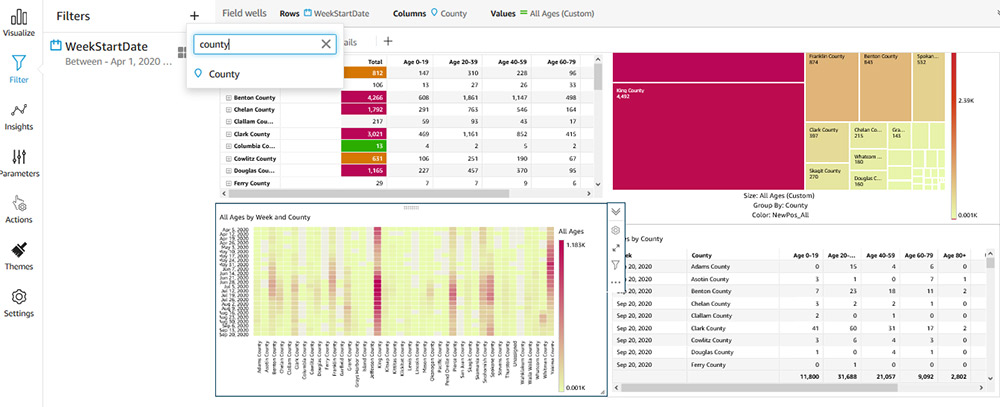AWS Big Data Blog
Category: Amazon QuickSight
New charts, formatting, and layout options in Amazon QuickSight
Amazon QuickSight is a fast, cloud-powered business intelligence (BI) service that makes it easy to create and deliver insights to everyone in your organization. In this post, we explore how authors of QuickSight dashboards can use some of the new chart types, layout options, and dashboard formatting controls to deliver dashboards that intuitively deliver insights […]
Transform data and create dashboards simply using AWS Glue DataBrew and Amazon QuickSight
Before you can create visuals and dashboards that convey useful information, you need to transform and prepare the underlying data. The range and complexity of data transformation steps required depends on the visuals you would like in your dashboard. Often, the data transformation process is time-consuming and highly iterative, especially when you are working with […]
Building an ad-to-order conversion engine with Amazon Kinesis, AWS Glue, and Amazon QuickSight
August 30, 2023: Amazon Kinesis Data Analytics has been renamed to Amazon Managed Service for Apache Flink. Read the announcement in the AWS News Blog and learn more. Businesses in ecommerce have the challenge of measuring their ad-to-order conversion ratio for ads or promotional campaigns displayed on a webpage. Tracking the number of users that […]
Amazon QuickSight: 2020 in review
As 2020 draws to a close, we’ve put together this post to walk you through all that’s changed in Amazon QuickSight this year. For your reading convenience, this post is broken up into the following sections: Embedded Analytics at scale Faster insights with Q & ML Business Intelligence (BI) with QuickSight Build Rich, Interactive Dashboards […]
New in Amazon QuickSight – session capacity pricing for large scale deployments, embedding in public websites, and developer portal for embedded analytics
Amazon QuickSight Enterprise edition now offers a new, session capacity-based pricing model starting at $250/month, with annual commitment options that provide scalable pricing for embedded analytics and BI rollouts to 100s of 1000s of users. QuickSight now also supports embedding dashboards in apps, websites, and wikis without the need to provision and manage users (readers) […]
Accessing and visualizing external tables in an Apache Hive metastore with Amazon Athena and Amazon QuickSight
Many organizations have an Apache Hive metastore that stores the schemas for their data lake. You can use Amazon Athena due to its serverless nature; Athena makes it easy for anyone with SQL skills to quickly analyze large-scale datasets. You may also want to reliably query the rich datasets in the lake, with their schemas […]
Applying row-level and column-level security on Amazon QuickSight dashboards
Amazon QuickSight is a cloud-scale business intelligence (BI) service that you can use to deliver easy-to-understand insights to the people you work with, wherever they are. QuickSight connects to your data in the cloud and combines data from many different sources. On a single data dashboard, QuickSight can include AWS data, third-party data, big data, […]
Event-driven refresh of SPICE datasets in Amazon QuickSight
Businesses are increasingly harnessing data to improve their business outcomes. To enable this transformation to a data-driven business, customers are bringing together data from structured and unstructured sources into a data lake. Then they use business intelligence (BI) tools, such as Amazon QuickSight, to unlock insights from this data. To provide fast access to datasets, […]
Using administrative dashboards for a centralized view of Amazon QuickSight objects
“Security is job 0” is the primary maxim of all endeavors undertaken at AWS. Amazon QuickSight, the fast-growing, cloud-native business intelligence (BI) platform from AWS, allows security controls in a variety of means, including web browsers and API calls. These controls apply to various functions, such as user management, authorization, authentication, and data governance. This […]
Amazon QuickSight adds support for on-sheet filter controls
Amazon QuickSight now supports easy and intuitive filter controls that you can place beside visuals on dashboards, allowing readers to quickly slice and dice data in the context of its visual representation. You can create these filter controls from existing or new filters with a single click, and configure them to support different operations, such […]









